JOHN LATHAM / LEE UFAN – LISSON GALLERY – MILAN
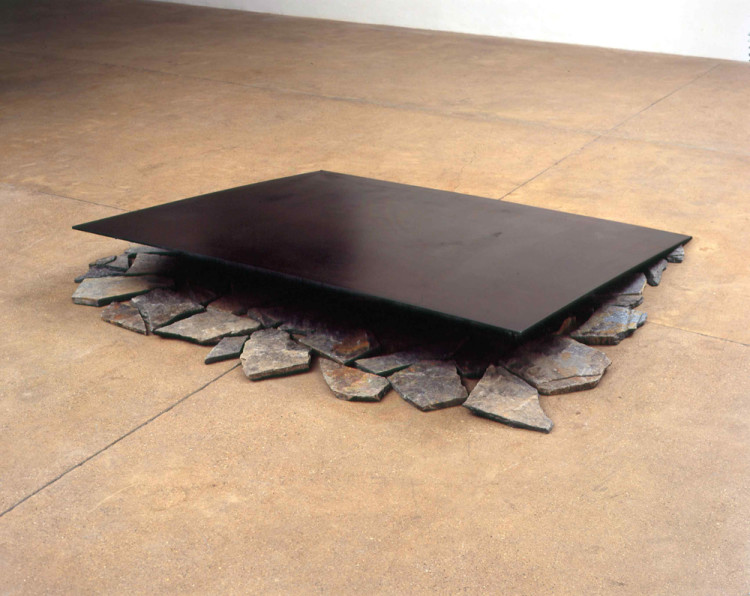
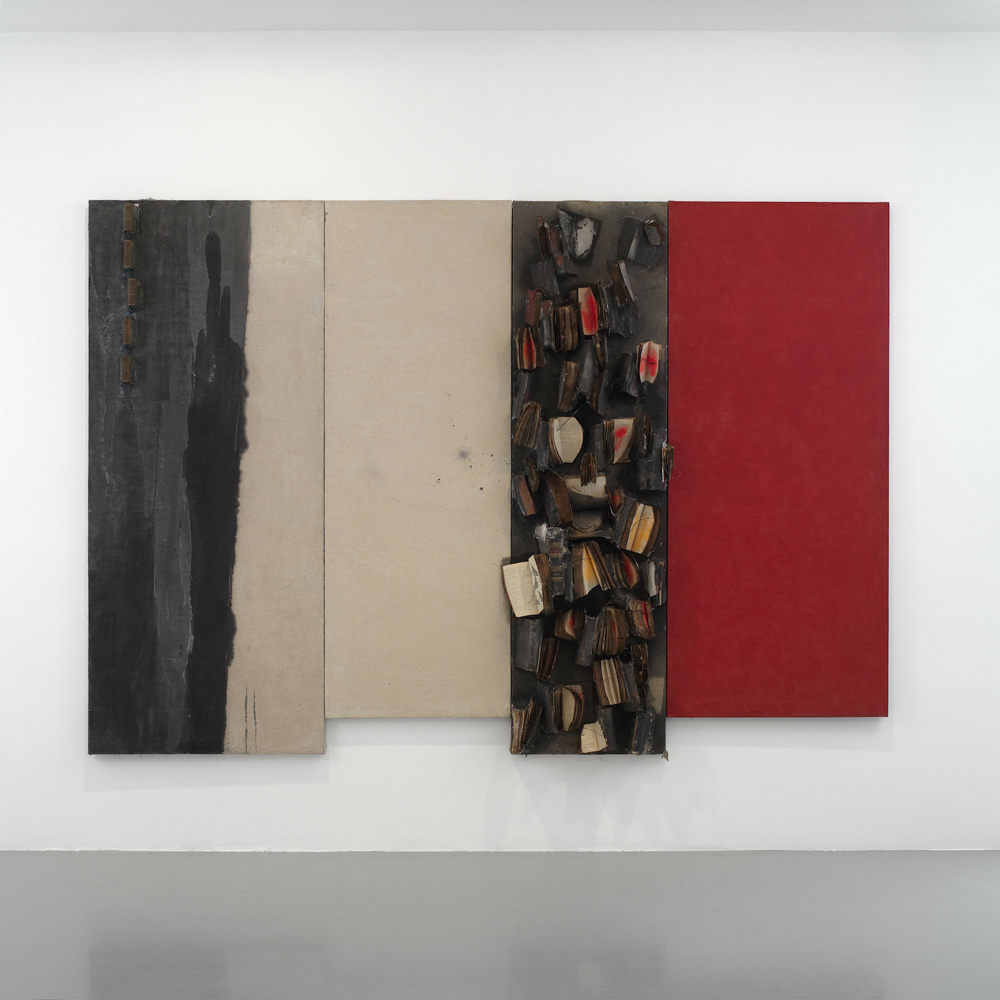
John Latham / Lee Ufan
Opening: 9 February – 7 pm
10 February – 23 March 2012
Lisson Gallery Milan, Via Zenale, 3
www.lissongallery.com
John Latham / Lee Ufan presents the work of these seminal artists, renowned for their conceptual and theoretical rigor. Each in their own unique way, the oeuvres of John Latham (1921-2006) and Lee Ufan (b. 1936) are testimony to a life-long investigation of the universe and the human understanding of its governing rules.
The gallery space is dedicated to the presentation of a series of works developed by John Latham over the course of 40 years, which examine the artist’s understanding of the human subject.
Latham conceived his work as an articulated and complex system which found visual expression as book reliefs, assemblages, film and performance and theoretical form as conceptual ideas and extensive writings.
Taking as its base an interpretation of Quantum Theory, the central objective of Latham’s theoretical enquiry was to overcome the traditional separation between matter and consciousness. He advocated for an all-encompassing system, formulated as ‘Time-Base Theory’, which could define everything in the Universe – inanimate objects as well as living organisms – as events with characteristic time-bases. A distinctive kind of human subject, who Latham defined as ‘Observer’, ‘Reflective Intuitive Organism’ and later as ‘Incidental Person’, lies at the core of the system.
Latter Day Observer (1963) refers back to a series of works Latham made between 1959-60 called the Observer Reliefs, inspired by Dostoyevsky’s novel The Brothers Karamazov. The three brothers – Mitya, Ivan and Alyosha – became for Latham representatives of different states or levels of human existence. While Mitya and Ivan respectively embody an instinctive and rational state, Alyosha was particularly significant for Latham as an expression of a ‘Reflective-Intuitive’ state, sophistication and the ability to embrace reflection and intuition above rationality.
The capacity for understanding relations from a distance and for reaching insights characteristic of Alyosha, led Latham to later develop the concept of ‘incidental person’ in relation to APG (Artist Placement Group), an organisation that Latham helped found with the purpose of integrating artists in the system of business, industry and government. APG identified the artist as an agent of change within an established social and economic system.
As part of the APG program, Latham undertook a placement with the Development Department of the Scottish Office in 1975. The project focused on giant shale heaps, locally known as ‘bings’, leftover of the mining industry around Edinburgh. From a 1947 aerial photograph of a group of ‘bings’ Latham identified ‘The Niddrie Woman’, an anthropomorphic shape resembling a female body complete with a heart, torso and uterus. Latham proposed to reconfigure the site as national monument by erecting two gigantic book reliefs, which could be climbed and used as observation platforms for the surrounding landscape.
Latham worked on several maquettes for the monuments, which remained unrealised. The book relief M.F.I. Bing was made in 1967 but not exhibited until 1976. M.F.I. stands for ‘Mental Furniture Industry’, which Latham negatively identified with specialised academic education. The title of this work was probably conceived during Latham’s Scottish placement.
The N-U Niddrie Heart (1991) – initially a multiple of 37 elements – refers directly to Latham’s diagrammatic representation of different levels of existence along a linear ‘A-Z’ spectrum. Within this system, where ‘A’ represents the shortest finite element and ‘Z’ the longest the area from ‘N’ to ‘U’ is occupied by human consciousness. Each element is a book shaped glass assemblage that stands on the floor and is connected to the next by a heap of sand. Encased between the vertical sheets of glass, two large green and brown books – The Pregnancy Survival Manual and Vanished Species – appear in each piece in variable permutations together with other assemblages of books, paint, small objects and wires. The ethical content of the books represent the entirety of life from birth to death, through different levels of human consciousness. Latham started to use glass in 1980, its transparency and stable nature symbolizing an a-temporal omnipresent.
The theme of the ‘Niddrie Woman’ resurfaced in a series of works from the mid 1990s. Known as the N-U Niddrie or Cosmic Blood series, these works adopt the spray-painting technique and were realised by placing sheets of canvas on the floor of Latham’s studio and transferring the colour applied to the glass onto canvas by surface contact. Some of the canvases reproduce patterns which directly relate to the ‘Niddrie Woman’ anatomy, while others refer back to abstract motifs.
One work in particular with a full red dot in the middle of the canvas, refers to Full Stop (1961), part of Tate Collection. This painting, a dense circular black spot in the middle of an unprimed canvas, was created by the repeated action of a spray gun – a singular dot referring to closure in typography but also to the beginning of matter in empty space. The multiple dots produced by the use of the spray gun produced an ambiguity of scale, symbolising either clusters of infinitesimal particles or incommensurable galaxies. Latham often presented canvases unframed or partially rolled, so that the full extent of the painting was never visible.
The Niddrie works, which were first presented in Edinburgh as a cohesive installation in the mid 90s, contextualize Latham’s concept of humanity within the smaller ‘least’ event on one side of the spectrum and the universe and the ecological question of the survival of the planet on the other.
01-1-10 (2005) is Latham’s final work and was described by the artist as ‘a sign for a (least) extended event which arises from a non-extended impulse’. The work is constituted of two transparent glass panels and one white board with a black vertical mark – signifying the binary state 0, or emptiness, and state 1, matter or ‘Least Event’.
Precursor to Story of the RIO (1982) is a study for a sequence of 18 panels tracing the development of complexity from a proto universe, indicated by transparent glass, to the ‘Reflective Intuitive Organism’ represented by book clusters.
Latham has often displayed reprints of the original aerial photograph of the ‘bings’ alongside his canvases. This image, a view that is denied to a human living on the planet, is connected to Latham’s 16mm film Erth (1971), presented here in video format. The film follows a rigorously structured sequence of static images, accelerating through a countdown from outer space to the surface of the earth and lastly a human figure. In his monograph on John Latham, the art historian John A. Walker considers it a metaphor for “the kind of distancing Latham considers necessary if humanity has to see itself objectively.”
Two works by Lee Ufan are presented in the outdoor sculpture garden: Relatum – Lover (1986) and Relatum – Friendship (2003). Lee Ufan is recognised as one of the most significant members of the avant-garde Mono-ha (Object School) group active in Japan in the late 1960s, early 1970’s. The Mono-ha school of thought rejected Western notions of representation, favouring ‘the art of encounter’ between the artist’s inner thoughts and exterior reality and focusing on the juxtaposition of raw materials. Lee is equally known for his work in painting and sculpture, as well as his literary contribution as a writer and poet. At the heart of Lee’s practice lies an East Asian perception of the self in connection with otherness and distinct from the Western notion of Ego.
Both sculptures presented here belong to Lee’s series Relatum, configurations of untreated round stones and rectangular industrial iron plates. These arrangements are flexible and occur as a temporary situation, an interaction between the materials themselves and the relation to the surroundings. The sculptures express Lee’s preoccupation with the concept of ‘Yohaku’ or resonant space, emphasising the power and energy of empty space rather than the artist’s intervention: “If I give a strong accent to a space by combining a natural stone with a neutral steel plate, the air around the work, rather than the work itself, takes on density, and the site where these objects are placed vividly reveals itself as an open world.”
About the Artists
John Latham (1921 – 2006) has been associated with several national and international artistic movements since he started showing work in the late 1940s. His work has been exhibited internationally, including recent solo exhibitions at Tate Britain (2005) and PS1, New York (2006) and has been included in numerous historic group shows and many important survey exhibitions of British Art since the 1960s including ‘Live in Your Head’ (Whitechapel Gallery, London, 2000), ‘From Blast To Freeze’ (Kunstmuseum Wolfsburg, Germany, 2003) and ‘Art and the 60s: This was tomorrow’ (Tate Britain, 2004). His work is held in collections worldwide, including the Tate Collection, MoMA New York, and the Museo Nacional Centro de Arte Reina Sofia.
Upcoming exhibitions include ‘Painting the Void: 1949-62’ LA MoCA (Oct 2012 – Jan 2013), travelling to Museum of Contemporary Art of Chicago (Feb – Jun 2013) and APG, Raven Row opening in September 2012.
Flat Time House, Latham’s former home and studio, has been open to the public since October 2008 for a programme of exhibitions and events and as a research and study centre.
Visit http://www.flattimeho.org.uk or contact Claire Louise Staunton, Curator, on 020 7207 4845 or claire@flattimeho.org.uk
Born in South Korea in 1936, Lee Ufan lives and works in Paris, France and Kamakura, Japan.
Artist, theorist, poet and teacher, Lee is one of the founders of the avant-garde Mono-ha (Object School) group, a movement that took root in Japan in the 1960s. In 2010, the Lee Ufan Museum designed by Tadao Ando opened at Benesse Art Site Naoshima, Japan. Major exhibitions include: National Museum of Contemporary Art, Seoul (1994); Galerie Nationale du Jeu de Paume, Paris (1997); Kunstmuseum Bonn (2001); Yokohama Museum of Art (2005); Museums of Fine Arts of Belgium, Brussels (2009) and Solomon R. Guggenheim New York (2011). Lee Ufan’s work is represented in several museum collections such as: Centre Georges Pompidou (France); Hara Museum of Contemporary Art (Japan); Queensland Art Gallery (Australia); MoMA (USA); Sao Paulo Art Library (Brazil); Berlin National Galerie (Germany) and TATE (UK).
Exhibition Facts
Opening Hours: Monday – Friday, 9.30am – 1pm and 3pm- 6pm. Saturday – by appointment only
Location: Via Zenale, 3, Milan – Tel: +39 02 89050608
For press information and images please contact:
Toby Kidd or Filipa Mendes at JB Pelham PR
Tel: +44 (0)20 8969 3959 – Email: toby@jbpelhampr.com or filipa@jbpelhampr.com
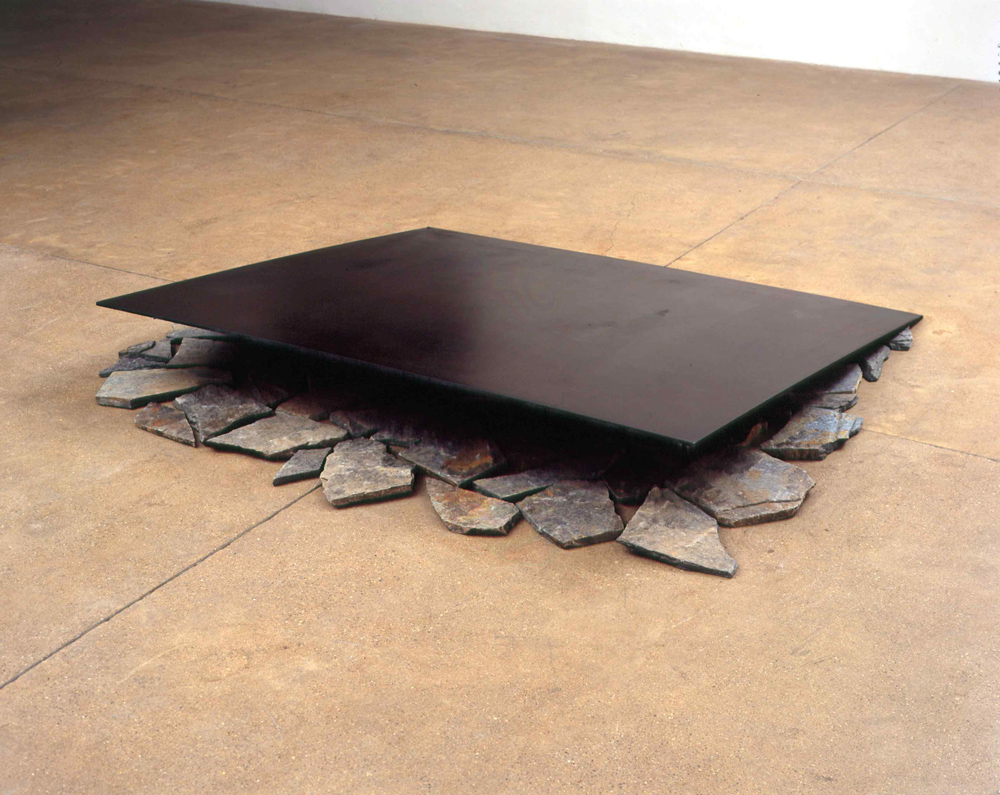
John Latham / Lee Ufan
Inaugurazione: 9 Febbraio – dalle ore 19 alle ore 21
10 febbraio 2012 – 23 marzo 2012
Lisson Gallery Milan, Via Zenale, 3
www.lissongallery.com
La mostra John Latham / Lee Ufan presenta il lavoro di due artisti rivoluzionari, conosciuti per il loro rigore concettuale e teorico. Ognuno a suo modo, John Latham (1921-2006) e Lee Ufan (b.1936) testimoniano la continua indagine rivolta alla comprensione dell’universo e delle leggi che lo dominano.
Gli spazi della galleria sono dedicati alla presentazione di lavori creati da John Latham nel corso di 40 anni, e che rivelano le profonde riflessioni dell’artista sulla tematica umana. Latham concepiva il proprio lavoro come un articolato e complesso sistema che trova, da una parte, espressione visiva nei book reliefs (dipinti che incorporano libri), negli assemblages, nei film e nelle performance e, dall’altra, forma teorica nelle riflessioni concettuali e negli scritti dell’artista.
Fondata sulla Teoria Quantistica, la ricerca teorica di Latham ha come obiettivo primario il superamento della tradizionale distinzione tra materia e coscienza. Latham sostiene l’esistenza di un sistema onnicomprensivo, che ha la capacità di descrivere ogni cosa nell’Universo – tanto gli oggetti inanimati quanto gli esseri viventi – come eventi dalle precise caratteristiche “time-bases” (intervalli temporali), concetto che l’autore elabora nella “Time-Base Theory”. Un tipo particolare di soggetto umano, definito da Latham come “Observer” (Osservatore), “Reflexive Intuitive Organism” (Organismo Riflessivo Intuitivo) e successivamente come “Incidental Person” (Persona Incidentale), è posto al centro dell’intero sistema.
Latter Day Observer (1963) si riferisce a una serie di opere realizzate da Latham tra il 1959 e il 1960, intitolate Observer Reliefs e ispirate al romanzo di Dostoyevsky I fratelli Karamazov. I tre fratelli – Mitya, Ivan e Alyosha – rappresentano per Latham i differenti stati o livelli dell’esistenza umana. Mentre Mitya e Ivan incarnano rispettivamente lo stato istintivo e quello razionale, Alyosha ricopre un ruolo particolarmente significativo ed è espressione stessa dello stato “Reflective – Intuitive”, di raffinatezza e di abilità nel porre riflessione e intuizione al di sopra della ragione.
Le caratteristiche tipiche di Alyosha – la capacità nel comprendere le relazioni analizzandole dall’esterno e di avere profonde intuizioni – portano Latham a un ulteriore sviluppo del concetto di “Incidental Person” in concomitanza con la nascita del gruppo APG (Artist Placement Group), organizzazione che Latham aiutò a fondare e che aveva lo scopo di inserire gli artisti all’interno del sistema economico, industriale e politico. Il gruppo APG individuava nell’artista un agente di cambiamento all’interno del convenzionale sistema sociale e economico.
Come parte del programma del gruppo APG, Latham intraprese nel 1975 un periodo di ricerca all’interno del Dipartimento di Sviluppo dello Scottish Office. Il progetto al quale si dedicò si concentrava su alcuni giganti cumuli di ardesia, localmente noti come “bings”, residui dell’industria mineraria dell’area di Edinburgo. Nel 1947, da una fotografia aerea che ritraeva un gruppo di questi cumuli, Latham identificò la “Niddrie Woman”, figura antropomorfa somigliante a un corpo femminile con cuore, torso e utero. Latham propose di eleggere il luogo a monumento nazionale erigendo due gigantesche sculture-libro che potessero essere scalate e usate come piattaforme di osservazione del paesaggio circostante.
Latham lavorò inoltre su numerosi modelli per la realizzazione di opere monumentali, rimaste però incompiute. Il “book relief” M.F.I. Bing fu realizzato nel 1967 ma non venne esposto prima del 1976. M.F.I. è l’acronimo di “Mental Furniture Industry”, definizione, probabilmente coniata durante la ricerca in Scozia, per indicare negativamente la formazione accademica specializzata.
The N-U Niddrie Heart (1991) – inizialmente un multiplo di 37 elementi – si riferisce direttamente alla rappresentazione diagrammatica tramite la quale, secondo Latham, è possibile definire differenti livelli di esistenza lungo un’asse lineare “A-Z”. All’interno di questo sistema nel quale “A” rappresenta l’elemento temporale più breve e “Z” quello più lungo, l’area da “N” a “U” è occupata da differenti livelli di consapevolezza umana. Ogni elemento di The N-U Niddrie Heart è costituito da lastre di vetro assemblate a forma di libro e poste sul pavimento, separate una dall’altra tramite cumuli di sabbia. Tra le lastre verticali di vetro, sono presenti due grandi volumi di colore verde e marrone – The Pregnancy Survival Manual (Manuale di Sopravvivenza alla Gravidanza) e Vanished Species (Specie Estinte)– che, in maniera differente per ciascun elemento, vengono affiancati da altri libri, piccoli oggetti, pittura e fili metallici. Il contenuto etico proposto dai due libri diviene metafora dell’intera vita, dalla nascita fino alla morte, attraverso differenti livelli di consapevolezza umana. Latham introdusse il vetro nella sua produzione artistica a partire dal 1980 per la sua trasparenza e la sua natura stabile capace di simboleggiare un’onnipresenza a-temporale.
Il tema della “Niddrie Woman” riapparve in una serie di opere realizzate nella metà degli anni Novanta. Conosciuti con il nome di N-U Niddrie o Cosmic Blood, questi lavori vennero eseguiti dall’artista attraverso la tecnica della pittura spray e vennero realizzati ponendo alcune tele sul pavimento dello studio di Latham e trasferendo il colore, applicato sul vetro, direttamente sulla loro superficie. Alcune delle opere riproducono elementi esplicitamente riferiti all’anatomia della “Niddrie Woman”, mentre altre presentano motivi astratti. In particolare, una delle opere, che raffigura un punto rosso al centro della tela, si riferisce a Full Stop (1961), parte della collezione permanente della Tate. Full Stop presenta un denso punto nero impresso al centro della tela, creato grazie all’azione ripetuta di uno spruzzatore – un singolo punto che nel linguaggio tipografico sta a significare una fine, ma che in uno spazio vuoto può rappresentare un inizio. I punti molteplici generati dall’uso spray dello spruzzatore, creano un’ambiguità di scala, simboleggiando sia sciami di particelle infinitesimali che galassie incommensurabili. Latham spesso presenta tele non incorniciate o parzialmente arrotolate in modo che l’immagine non sia mai visibile nella sua interezza.
Le opere “Niddrie”, che furono inizialmente presentate a Edinburgo come un’unica installazione alla metà degli anni Novanta, contestualizzano il concetto di umanità di Latham sia all’interno della dimensione infinitesimale dell’evento minimo “Least Event”, sia in quella universale e di più ampia riflessione ambientalista legata alla sopravvivenza del nostro pianeta. 01 – 1 – 10 (2005) è l’ultimo lavoro di Latham descritto dall’artista come “un segno per un evento di minima estensione che nasce da un impulso senza estensione”. L’opera è costituita da due pannelli di vetro e da una tavola bianca attraversata da un segno nero verticale che rappresenta lo stato binario 0, o vuoto, e lo stato 1, materia o “Least Event”.
Precursor to Story of the RIO (1982) è uno studio per una serie di 18 pannelli che mostrano il progressivo aumento di complessità a partire da un proto universo, indicato da un vetro trasparente, fino ad arrivare al “Reflective Intuitive Organism” rappresentato invece da cumuli di libri.
Latham ha spesso esposto, insieme alle sue tele, riproduzioni della fotografia aerea originale dei “bings”. Questa prospettiva, negata all’essere umano sulla Terra, è riutilizzata nel film in 16 mm Erth (1971) realizzato da Latham e presentato qui in formato video. Il film propone una rigorosa sequenza di immagini statiche, che accelera la sua velocità attraverso un conto alla rovescia, partendo dallo spazio cosmico fino ad arrivare alla superficie terrestre e alla figura umana. Nella monografia dedicata a John Latham dallo storico dell’arte John A. Walker, Erth viene definito come la metafora che rappresenta “il tipo di distanza che Latham considera necessaria affinché l’umanità abbia una visione obiettiva di se stessa”.
Due opere di Lee Ufan sono esposte nel giardino esterno alla galleria: Relatum – Lover (1986) e Relatum – Friendship (2003). Lee Ufan è considerato come uno dei maggiori esponenti del gruppo d’avanguardia Mono-ha (Object School), attivo in Giappone alla fine degli anni ’60. La scuola di pensiero Mono-ha rifiuta la modalità di rappresentazione imposta dal pensiero occidentale, preferendole “l’arte dell’incontro”, che mette in relazione le profonde riflessioni dell’artista con la realtà esterna e che si focalizza sulla giustapposizione di materiali non lavorati. Lee è conosciuto sia per le sue opere pittoriche e per le sue sculture così come per il contributo fornito alla letteratura come poeta e scrittore. Alla base della pratica artistica di Lee si trova il concetto orientale dell’individuo che si identifica attraverso la relazione con l’altro e si differenzia dalla nozione occidentale dell’Ego.
Entrambe le sculture presentate appartengono alla serie Relatum, combinazioni di pietre non lavorate e lastre di ferro rettangolari di provenienza industriale. Queste composizioni sono flessibili e hanno di per sé natura temporanea, essendo create attraverso l’interazione tra i materiali stessi e tra questi e lo spazio circostante. Le sculture esprimono il concetto di “Yohaku” o spazio di risonanza, caro a Lee Ufan, che spiega come la forza e l’energia scaturisca da uno spazio vuoto piuttosto che dall’intervento dell’artista. “Se pongo un forte accento sullo spazio, combinando una pietra naturale con una lastra di ferro neutra, l’aria intorno all’opera, piuttosto che l’opera stessa, acquista densità e il luogo dove questi oggetti sono posti si rivela chiaramente come un mondo aperto”.
Biografie
John Latham (1921 – 2006), fin dagli inizi della sua carriera nel 1940, è stato legato a numerosi movimenti artistici nazionali e internazionali. Il suo lavoro è conosciuto a livello internazionale e recentemente la Tate Britain (2005) e il PS1 di New York (2006) gli hanno dedicato due mostre monografiche. Le sue opere sono inoltre state esposte all’interno di numerose mostre collettive e in importanti mostre antologiche dedicate alla British Art dal 1960, tra le quali “Live in Your Head” (Whitechapel Gallery, Londra, 2000), “From Blast to Freeze” (Kunstmuseum Wolfsburg, Germania, 2003) e “Art and the 60s: This was tomorrow” (Tate Britain, 2004). Opere di John Latham sono state raccolte inoltre in prestigiose collezioni museali, tra le quali la Tate Collection (UK), la collezione del MoMA di New York (USA) e del Museo Nacional Centro de Arte Reina Sofia (ES).
Prossimamente sarà aperta al pubblico “Painting the Void: 1949-62”, mostra realizzata dal MoCA di Los Angeles (ottobre 2012 – gennaio 2013) e che verrà poi riallestita al Museum of Contemporary Art di Chicago (febbraio – giugno 2013) e una mostra sulle attività di APG, che aprirà a Raven Row a settembre 2012.
Il primo studio di Latham, Flat Time House, è stato aperto al pubblico a partire dal mese di ottobre del 2008 e trasformato in centro di studio e ricerca e in spazio espositivo per la realizzazione di mostre ed eventi. Per maggiori informazioni, è possibile visitare il sito http://www.flattimeho.org.uk o contattare Claire Louise Staunton, Curatrice, per telefono allo 020 7207 4845 o all’indirizzo email claire@flattimeho.org.uk .
Nato nel 1936 in Corea del Sud, Lee Ufan vive e lavora tra Parigi (Francia) e Kamakura (Giappone). Artista, teorico, poeta e insegnante, Lee è uno dei fondatori del gruppo d’avanguardia Mono-ha (Object School) nato in Giappone negli anni ’60. Nel 2010, è stato inaugurato presso il Benesse Art Site a Naoshima in Giappone il Lee Ufan Museum, disegnato da Tadao Ando. Le sue opere sono state esposte al National Museum of Contemporary Art di Seoul (1994); alla Galerie Nationale du Jeu de Paume di Parigi (1997); al Kunstmuseum di Bonn (2001); al Yokohama Museum of Art (2005); al Museums of Fine Arts of Belgium di Bruxelles (2009) e al Solomon R. Guggenheim di New York (2011). Lavori di Lee Ufan sono stati raccolti in importanti collezioni di numerosi musei internazionali, tra i quali: il Centre Georges Pompidou (Francia); l’Hara Museum of Contemporary Art (Giappone); la Queensland Art Gallery (Australia); il MoMA (USA); la Sao Paulo Art Library (Brasile); la Berlin National Galerie (Germania) e la TATE Collection (UK).
Informazioni Pratiche
Orari di Apertura: da Lunedì a Venerdì: 9.30 – 13.00 e 15.00 – 18.00 – Sabato: solo su appuntamento
Sede: via Zenale 3, Milano – Tel: +39 02 89 05 06 08
Contatti per la stampa:
Paola C. Manfredi Studio – T.: +39 02 87238004 – press@paolamanfredi.com
Paola C. Manfredi – Mob. +39 335 54 55 539- paola.manfredi@paolamanfredi.com

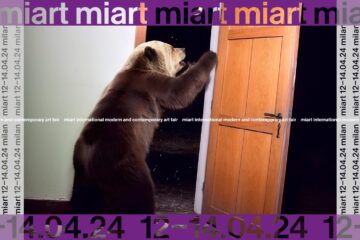
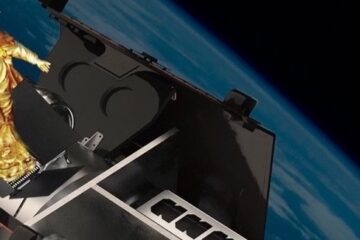
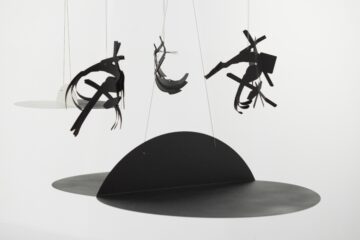
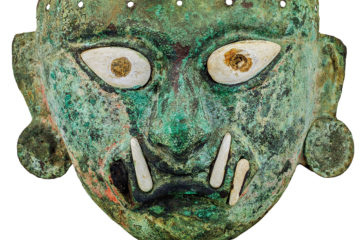

No Comment